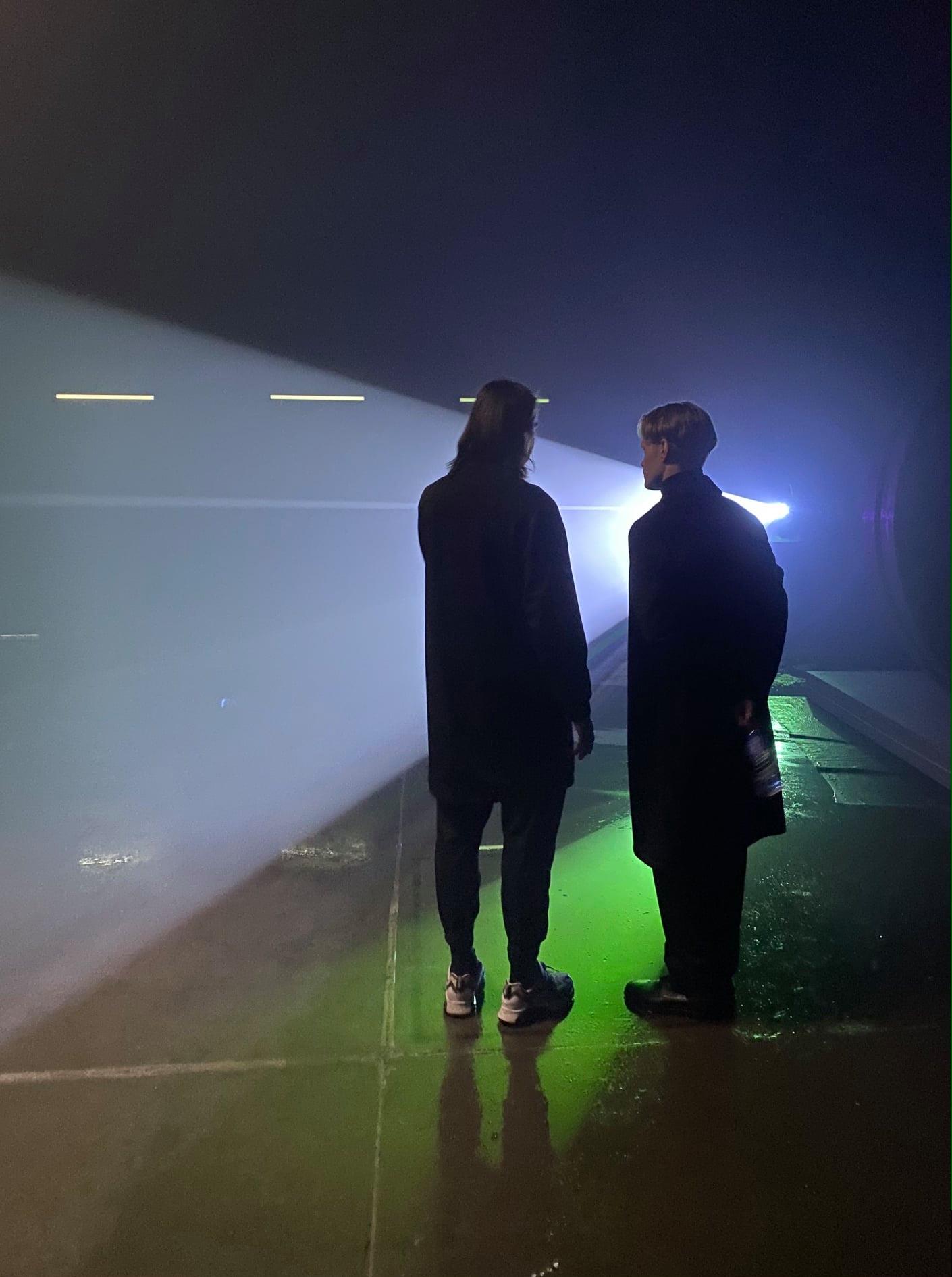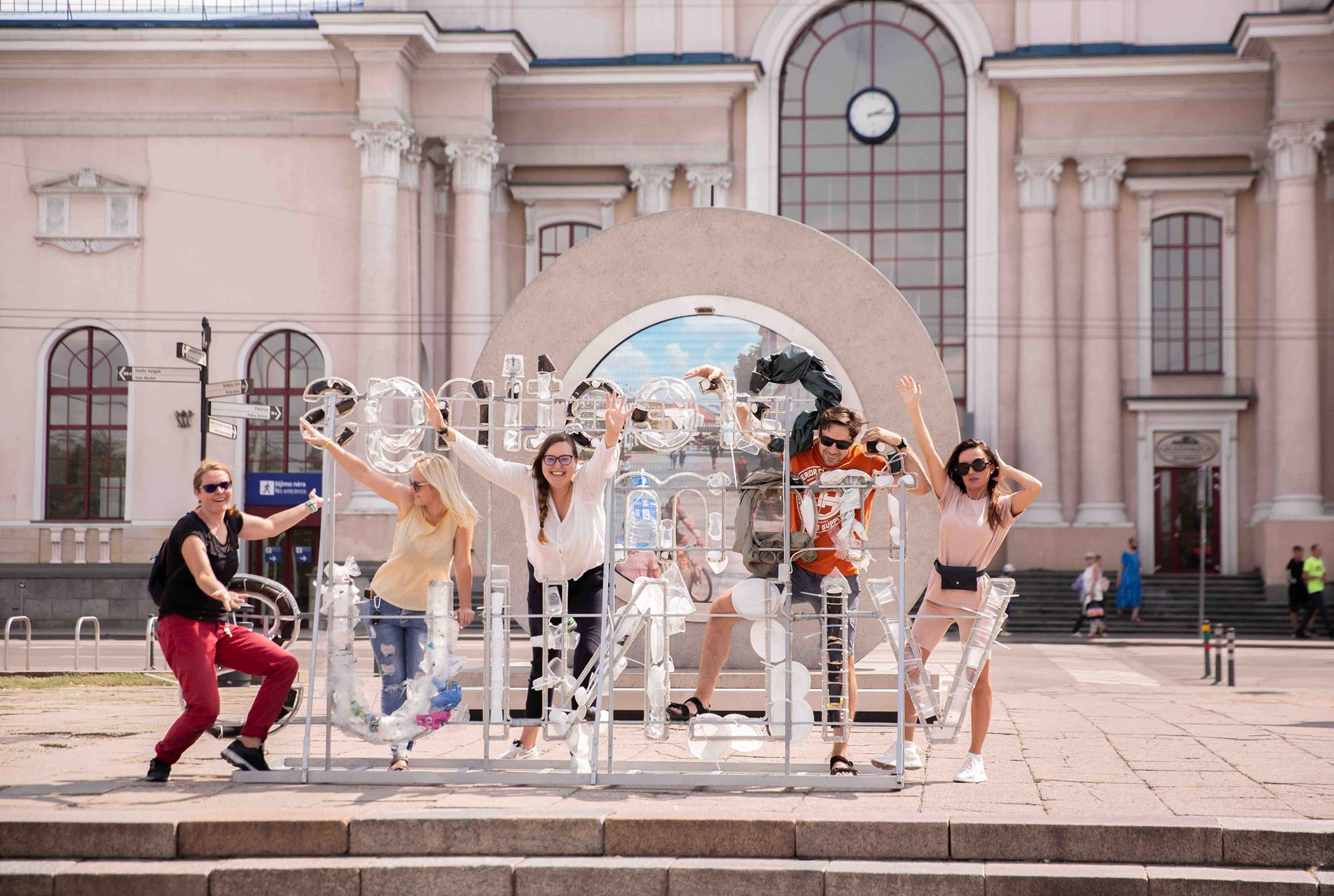The earth as seen from space has no borders. We can only vaguely distinguish between sea and land, desert and rainforest, and icy terrain. But the map knows all kinds of borders and separates countries from cities. Here, a project began that attempts to communicate that make people forget boundaries and distances.
In May 2021, an unfamiliar structure was installed in the squares of Vilnius, the capital of Lithuania, and Lublin, Poland. The structure transcends the borders of the two countries and illuminates each square. People can say hello through the structure by making eye contact and waving hands. They can also share things like riding a board or dancing in the plaza, enjoying a small festival in the freshness of early summer!
The name of the structure is ‘pOrtal’. It is a tool that helps overcome geographical limitations by connecting specific places through a real-time video transmission. You can communicate with distant cities without visiting in person. it is a ‘clairvoyance’ looking out hundreds of miles. The first person to come up with this idea was Benediktas Gylys. He founded the Benediktas Gylys Foundation to support creators and scientists and planned a pOrtal project.
Q. Please tell us how you started the pOrtal project.
A. Humanity today faces potentially fatal problems such as social and economic polarization and climate change. If you look closely, these problems are not caused by a lack of scientists, activists, leaders, or lack of knowledge or skills. Rather, it is due to tribalism, a lack of empathy, and an isolated (mainly national) perception of the world. That is the reason we decided to start the pOrtal project. The portal is a bridge for unity to rise above prejudices, outdated ideas, and the insubstantial dichotomy of ‘us’ and ‘them’.
Q. Is there a reason that a pOrtal was designed into the circle?
A. Part of Vilnius Gediminas Technical University (VILNIUS TEC) LinkMenų fabrikas, the technical heart of the project, chose an image familiar to people. In particular, it borrowed the circle shape, like a bridge connecting with other worlds represented in various science fiction. POrtals, resembling the wheel of time allows people to travel on the other side of the world through this bridge. It is also shaped like our planet and an apple of an eye. People all have different body shapes and skin colors, but their eyes are all around.
Q. What kind of technology was applied to the project to build a real-time broadcasting system?
A. We gathered various knowledge and skills to create an ‘interactive bridge’ that can connect cities. The project required cooperation from 3D modelling design to digital content development and logistic challenges for physical production and transportation of pOrtals. Of course, we needed help from local governments. Vilnius Gediminas Technical University, Vilnius, and the city of Lublin joined hands on this project. The design was chosen as the simplest form to contain all the complex devices while avoiding the risk of vandalism and minimizing the environmental impact. For the prototype, we tested different materials and it took a long time. Lastly, the pOrtal was built using concrete, stainless and tempered glass, and we were able to install the finished product with perfect real-time communication without delay.
Q. It took five years to connect the two cities. What was the most difficult part of selecting a city for the project site and installing the pOrtal?
A. First of all, since it is a large structure that weighs 11t and reaches a height of 3.4 m, it was a challenge to install it and to find a logistical site that asked for a reasonable distance. Also, there were practical problems. It took us a few years to build friendships and find like-minded partners abroad. When we were contacting them, many cities were skeptical of the project. In some cases, they did not understand the meaning of the project at all in the beginning. But we were acceptable to their reactions. It would not be easy for them to imagine the feeling and the vibrant the pOrtal would deliver when it is completed just by reading a simple PDF file.
Q. Krzysztof Stanowski, Director of International Cooperation Center said, ‘I wanted to emphasize and evoke the historic role of the city while creating a space of freedom and tolerance’. I’m curious about the background of choosing the cities of Vilnius, Lublin, and others in progress.’
A. I wanted to remind myself of the deep friendships with neighbor countries. I wanted to further strengthen the historically and culturally intimate relationships between Lithuania and Poland. The next city to connect to has not been decided yet, but when the pandemic is over, I would like to speed up the project again.
Q. What does the future of pOrtals look like?
A. A pOrtal project is not a simple one-timer. Shortly, we plan to install dozens of pOrtals in various cities around the world. We are going to allow our users to travel through different cultures by standing in front of the pOrtal and changing the screen every few minutes. What we want is to erase the distance between cultures, stimulate public movement, and permeate the community. In the long run, the most important goal is to make it possible for different cultures and people to connect in any city on any continent. We are constantly discussing with several cities to create the first 10 cities of the ‘#pOrtal Cities Network’. However, we still have not heard from Korea, yet! If someone reading this feels called to build a pOrtal in the vibrant and beautiful cities of Korea, please contact us.
About the Author
Benediktas Gylys Foundation was founded in 2013 at the initiative of Benediktas Gylys. He pursues science and creativity, inclusion and entrepreneurship, and support creators and work together. In addition to <POrtal Project>, he has been involved in various cultural and technological projects, such as publishing publications and collaborating with the Lithuanian Pavilion of the Venice Biennale




